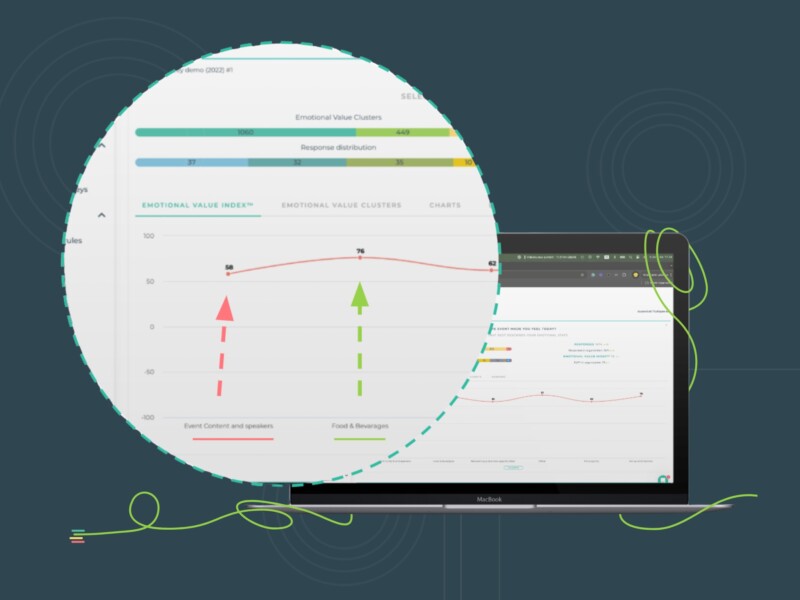Customer pain points are various problems your clients experience with regards to your brand and the product. In one of our previous articles, we explained the main types of customer pain points such as, financial, support, process, and productivity and how they negatively impact customer experience. Here, we are going to take you through some effective methods through which you can identify and tackle them.
Lend an ear to your customers to discern their pain points
As the ultimate users of your product, your customers are the best source to give you an in-depth understanding of how effective your product/service is. So, first, listen to their complaints regardless of whether the issue can be solved at present or not. It will help you comprehend the damaging mistakes your business might be doing. Reaching out to them through surveys, feedback forms, and even interviews can also help you identify the blind spots better. Additionally, you can send out email newsletters to subscribers with questions about their expectations regarding the brand or product.
Including open-ended, context specific questions will bring you multi-faceted, comprehensive answers. Conveying the purpose of your questions and communicating clearly with them can persuade customers to consider it seriously and answer genuinely.
Research to find out what you can do better
Researching is the key to eliminate the negative gap between customer expectations and the brand’s delivery. It gives you a third-person perspective on how customers actually feel about engaging with your brand as opposed to how you perceive the interaction to be. Research can be performed both qualitatively and quantitatively.
Qualitative research on how the customer engages and responds to a brand’s product on social media platforms can give you an insight into the pain points they face. Also, researching reviews and customer suggestions online is important for businesses to understand customer behavior and expectations better.
Performing quantitative research with data analytics can also help businesses identify common areas in which all customers face difficulties. As an example, getting the average time taken to deliver goods to customers or the average waiting time of a customer in line to reach the support desk can help you determine if customers are kept waiting too much or served promptly.
Use personalized approaches to solve pain points
Every customer is different, and so are their pain points. So segmentation according to gender, age, location, and other similar categories may be more important than you think. Research has suggested that there can be striking gender differences when it comes to purchase decision-making. For women, it’s more about the whole experience of purchasing goods, whereas for men it is more about purchasing the desired product. This is just one example out of many.
So, all market gaps and various pain points that arise out of them cannot be solved with a one-size-fits-all approach. Therefore, tailored solutions that best appeal to each market niche or customer type must be provided for best customer experience. Quantitative research methods can be used to segment your customers based on predefined customer personas and demographics to find out what type of customers need more attention.
Eliminate silos in department for smooth transition of information
In order to provide good customer experience, important customer details acquired by one department should be readily available to another department to access when necessary. Otherwise, as customers move from one department to another in their customer journey, they will be insisted on repeating the same detail that they have already provided. A lot of customer pain points arise from customer’s frustration at a brand that takes up their valuable time for avoidable reasons. Clueless agents trying to help customers are another addition to the disaster.
Siloed departments are a major reason that hinders the access and efficient circulation of vital information in the organization. This is why it’s important to break down the silo and improve the integration between departments such as product development, marketing, sales, and customer service. Introducing a platform that can be accessed by every employee to know about customers’ details beforehand is a good place to start.
Fine tune sales and customer services
Sales and customer service are two major areas that customers closely interact with in their buying journey. For this reason, customer pain points can easily arise out of them with or without your knowledge of their drawbacks.
Observe how your sales staff is treating and cater to requirements on a daily basis. If you find it lacking in comparison to the optimal service you expect them to provide, convey it to them. This is where training programs, incentives tied to performance, and other employee engagement strategies come into play.
The same goes for the customer services unit as well except you need to scrutinize than observe how they respond to each customer feedback and complaints. They can’t be beating around the bush leaving the customers hanging for a helpful response. Efficient customer support units should be driven to solve problems in a simplified, prompt, and courteous manner. The service offered here is pivotal to customers as it’s the hub where they bring their worries to attention. Don’t let the process itself create a separate pain point.
Decide how much you are going to allocate to address the pain points
If your customers are facing a lot of pain points that need fixing, you would obviously worry about the cost of it. It can be hard, especially when you are running on a tight budget. However, if left unresolved, the cost of losing loyal customers and downgraded brand image can be higher. In this case, prioritize the pain points based on urgency and severity. Focus on what pain points need to be addressed immediately to minimize customer churn, and look at cost-effective ways to resolve it.
Channel your efforts through marketing campaigns
It’s important to let your customers know about your efforts in addressing their pain points. As an example, if you have improved your product overcoming one of its drawbacks, make sure your marketing campaigns highlight it. Take the word out there for the benefit of your customers who are on the verge of abandoning your product as well as for the benefit of your organization.
Sometimes, the issue you have addressed might be a common pain point in the industry itself and in this case, your investment in devising and implementing an effective solution can reap manifold returns. Consider the classic example below.
Qdoba is a Mexican restaurant chain in the U.S and Canada famous for its burritos. One of the common financial pain points customers of Qdoba and its competitors faced was the additional charge for extras like guacamole. Qdoba decided to solve it by providing it free of charge and put up billboards advertising ‘Freedom tastes like guacamole – Extras aren’t extra,’ a Unique Selling Point (USP) with the potential to attract new customers. A win-win situation for both customers and the business! (Source: FX Blog)
Conclusion
There is no blanket approach ideal for all businesses to resolve their customer pain points. However, knowing the basic procedure to handle them can be useful. The primary step is to identify the pain points and their root causes. Then, you develop a suitable approach through which they can be resolved while improving the overall experience your brand renders to customers. Finally, let customers know about it, especially if there are prominent changes made to their buying process.



